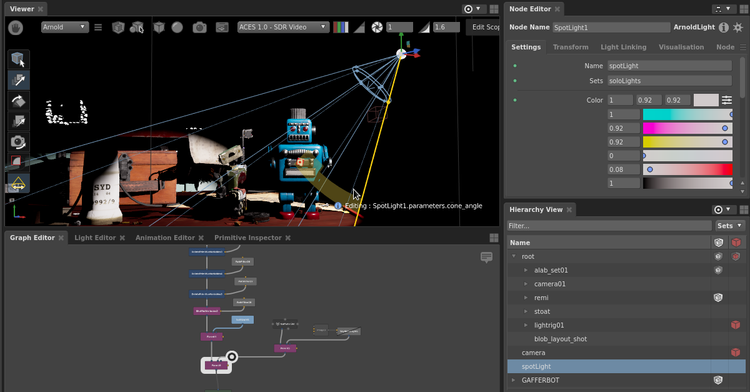0.56.0: New set expression operators
Gaffer allows scene locations to be organised into sets, and then uses a simple expression language to combine sets for use in light linking, shader assignments and the like. In this short post we'll discuss a historical limitation of set expressions and present some useful improvements made in Gaffer 0.56.0.0.
Sets are often used to identify specific assets within a scene, as well as objects with particular material properties. The screenshots below show an example of such a setup. There are robotOne and robotTwo sets to identify the root locations of each robot asset, and there is a glassMaterial set to identify all objects which should be shaded as glass.
So, it should be pretty easy to assign a glass shader only to the relevant objects in robotOne, right? Just chuck down a ShaderAssignment and a SetFilter and you're done!

glassMaterial & robotOne. Nada.Alas no. Our metallic friend isn't receiving any shading. But why not? The answer lies in the details of the set expression : glassMaterial & robotOne. It sounds like it should do what we want : select all the things that are in robotOne and also in glassMaterial. But there's a problem. The asset set contains the root location of the asset hierarchy, and the material set contains the leaf locations of some objects. The & operator works on a location-by-location basis, and no single location is present in both the asset and material set.
Gaffer 0.56.0.0 introduces a new operator, in. Unlike &, this is hierarchy-aware, and it picks all objects from one set which are descendants of the objects from another set. So, glassMaterial in robotOne gives us exactly what we want.

glassMaterial in robotOne. That's better.We've also added a containing operator that does the opposite : selects all the locations in one set which are ancestors of locations in another. Hopefully these two operators go a long way towards making set expressions more useful for common lookdev tasks.
